What Classes Do You Take in Middle School
Features of education in the United States
- Autonomy. Certain subjects are compulsory by state decree: Natural Sciences Biology, Chemistry, Physics , Math, English Writing and Literature , and Social Sciences History, Geography, Economics . Some states are also introducing First Aid and Sex Education classes to the list. But otherwise, the schools make up programs and schedules independently. They can add courses in foreign languages, arts, ecology, and so on. Universities similarly enjoy wide autonomy in terms of picking faculty staff and research topics.
- K-12. This is the general name for the US school system. In America, they study for 13 years: the kindergarten year (K) + 12 years of secondary education. Sometimes K-14 (kindergarten + secondary education + two-year college) and K-16 (kindergarten + secondary education + Bachelor's degree) are also mentioned.
- Sports. Physical education takes a large place in the US education system. And not only at school, but also at the university. Universities provide athletes with generous scholarships. Students are always evaluated according to two indicators: academics and athletics. There are a lot of clubs operating at schools: basketball, football, rugby, volleyball, and others.
- Conditions for foreign citizens. Most foreigners people without official residence permit study in private schools. This is due to the fact that, according to the law, they can enter the state schools only between grades 9 to 12 and only for one year. In universities, in the meantime, they often set different prices for external students. The cost of tuition for foreigners and residents of other states is 2-3 times higher than for the local ones.
- Practical orientation. The American education system provides students with practical knowledge that will help them in real life. This is reflected, among other things, in the existence of classes on health education, proper nutrition, Sex Education, and others.
- Changing educational institutions. Many American schools provide only one level of education. That is, in one building there is a primary school, in another — a middle school, and in the third one — a high school. In 12 years, students can change from two to three schools.
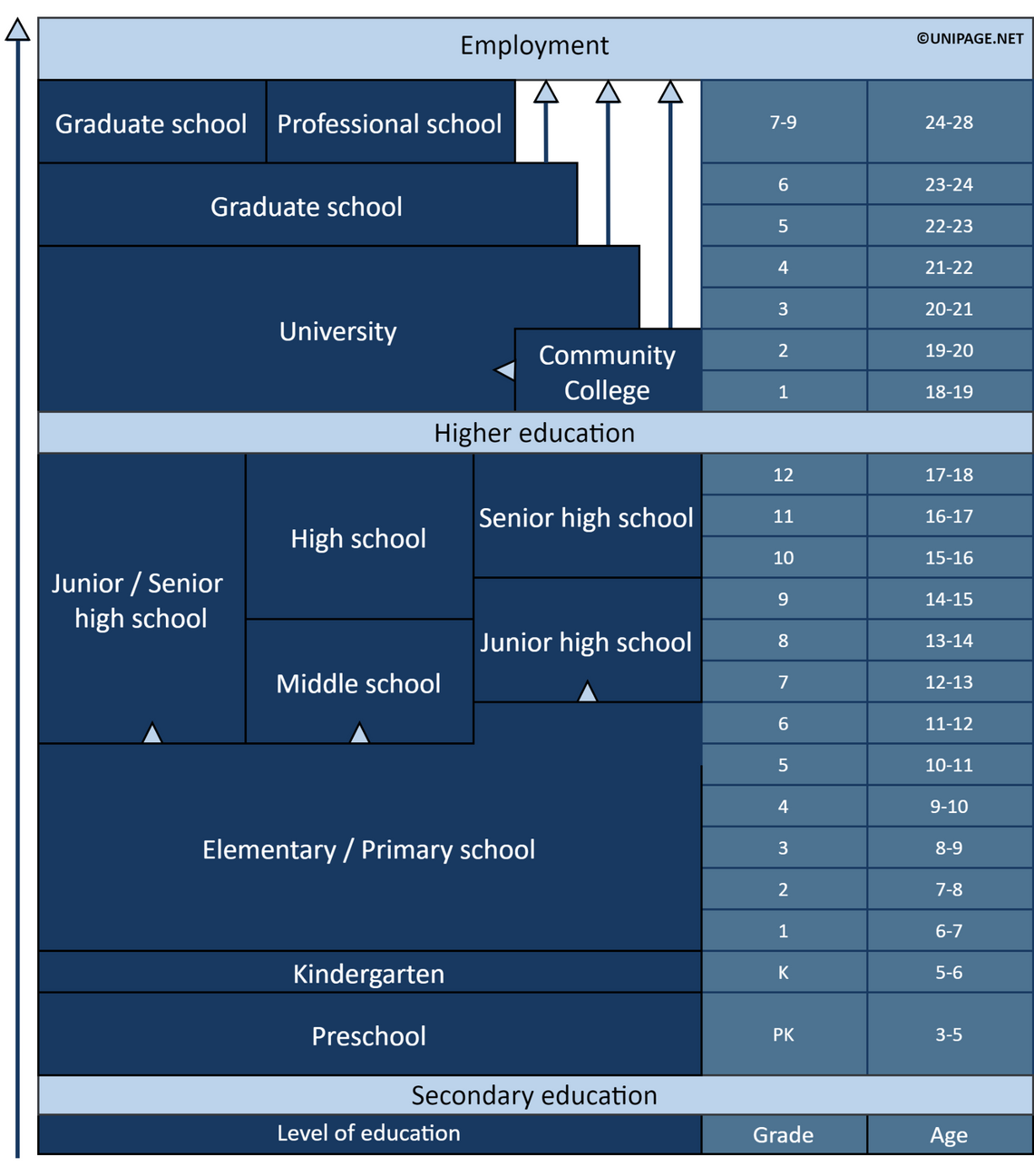
Photo by: UniPage
Preschool education
Preschool education is not considered compulsory and therefore is not funded by the federal government. But many states are funding that stage themselves and offer it at low costs (or even for free). In addition, not all states require a special license to run such programs[1].
This stage is often referred to as 'pre-kindergarten.' Preschoolers include toddlers up to five years old. As a rule, children attend classes for half a day, no more. There are several types of educational institutions where they can study: private and public, community, church, special child care centers, and others[1].
Preschool classes are also very varied. The main goal is to help them socialize and prepare them for kindergarten. Children learn by playing. A lot of time is devoted to interaction with peers. A standard set of lessons in preschool can look like this:
- Mathematics;
- Reading;
- Painting;
- play cubes;
- games with sand and water;
- pretend play.
Each subject develops certain skills necessary in life[2]. With Math and Reading, everything is clear. Drawing teaches abstract thinking, develops creativity and imagination. Cubes help with visual-figurative thinking, attention to detail, and fine motor skills. A table with water and sand is the kids' first acquaintance with the world of physics. Pretend play teaches them to try on different roles and build emotional intelligence.
From the age of five, children enter kindergarten and begin their journey through the K-12 system.
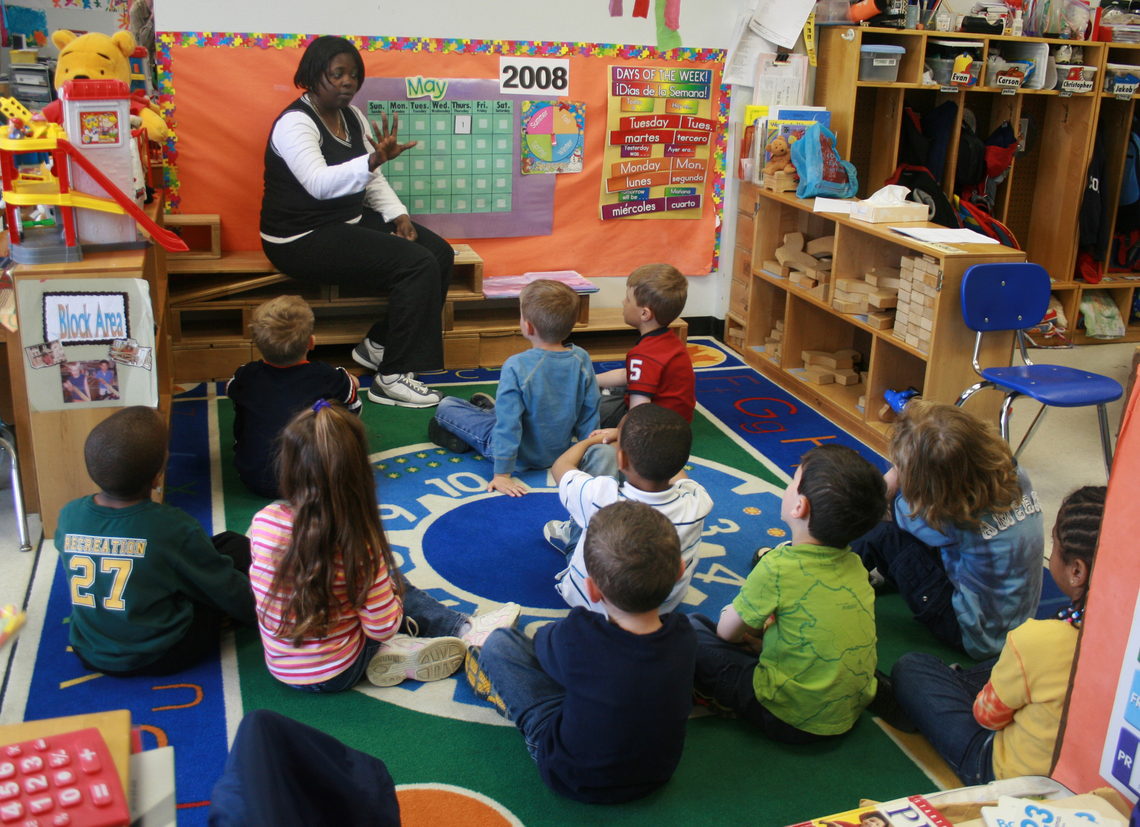
Primary education
Kindergarten
The first year of primary education is called kindergarten. It might be more correct to call it the 'zero level,' however. Kindergartens are held in schools, and American children attend them daily for the full school day. It usually lasts four hours plus breaks , from 8:30 to 13:30. In those kindergartens, children spend only one year. The program is more serious than preschool education and prepares pupils for admission to primary school.
Unlike preschools, the stage of kindergarten is considered compulsory in the US education system. Therefore, each state has an approved schedule and a required list of disciplines. Over the year in kindergarten, children must master the skills of reading, speaking, and writing: how to express their thoughts correctly, understand the meaning of a text, quickly read aloud, and so on. They also learn the basics of algebra and geometry, learn to count and recognize different shapes. Natural and social sciences are also taught in kindergartens only the basics : Art, Music, and Health and Safety[3].
Primary School
After kindergarten, children finally get to primary school (aka elementary school). It lasts from first to sixth grade. During this period, all subjects are taught by one teacher. The major subjects are English, Mathematics, Geography, History, and Natural Sciences. Well-funded schools employ individual teachers for the classes in Music, Art, or foreign languages. On average, children stay at school until 6-7 pm. They take extra hours or do their homework in the afterschool.
The grading system for the first two years is very simple:
- E (excellent );
- S (satisfactory);
- N (needs improvement );
- U (unsatisfactory).
Later the standard American school grades A, B, C, D, and F are gradually introduced, where A is "excellent" and F is "failure." Already in elementary school, children pass their first standardized tests. They measure the academic progress of students and prepare them for the future university entrance exam, the SAT. There are no graduation exams in primary school.
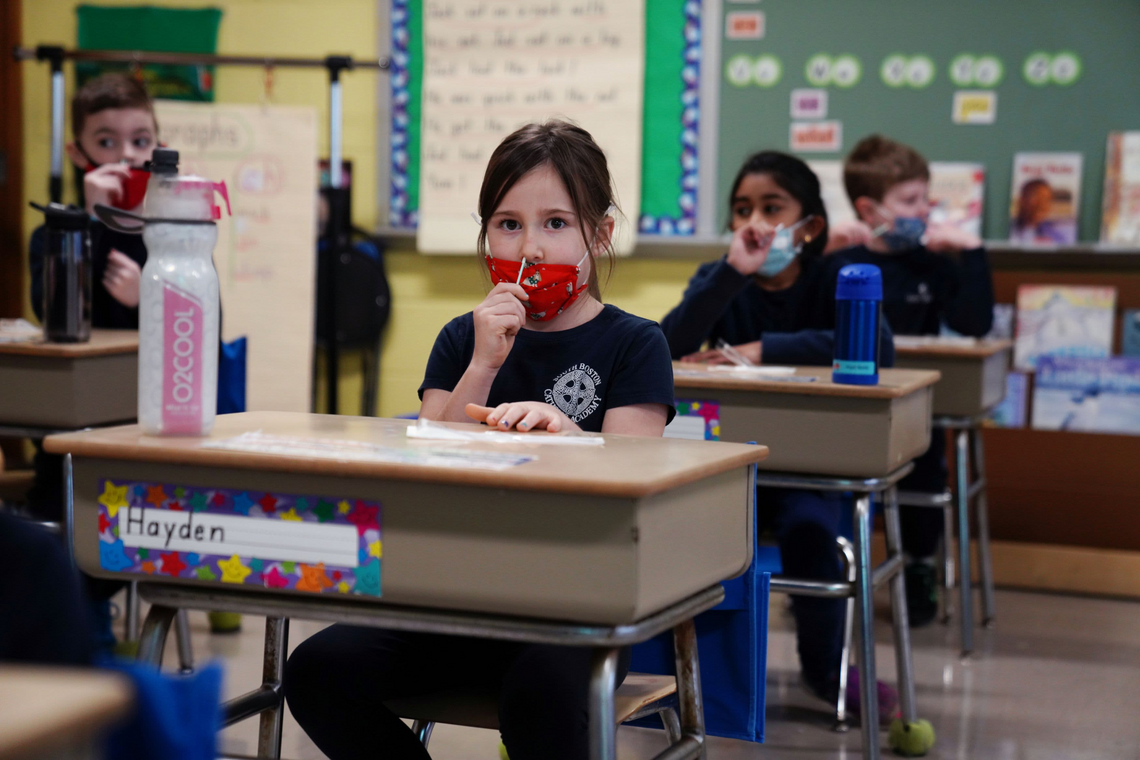
Secondary education
Middle school / Junior high school
Many people use these terms interchangeably, although they were originally used to describe entirely different types of high schools. Middle school lasts from sixth to eighth grade and junior high school — from seventh to ninth. It is also thought that junior high is more focused on compulsory subjects, test preparation, fixed schedules, and generally, is more oriented on accountable results. The middle school focuses on students: their all-around development, including emotional and social. Teachers give them more freedom in their choice of subjects and conduct classes in smaller groups. Today the differences between junior high and middle school are not so drastic[4].
Classes in the US high school are taught by different teachers, each an expert in their subject. The heaviest emphasis is on English, Science, and Mathematics. These three subjects plus History and Physical Education are compulsory. But students get to choose the level of classes: basic or advanced. The latter is for those who want to study subjects in more depth. All students must also take 1-2 additional subjects. They can be anything, from debates to STEM Science, Technology, Engineering, Mathematics . Therefore, in American schools there are no permanent classes — all students are "mixed" because of their individual schedules.
Tests are carried out regularly. The final grade for the entire period of study in secondary school depends on them. There are no final exams here, it is enough to have "satisfactory" in all subjects to graduate.
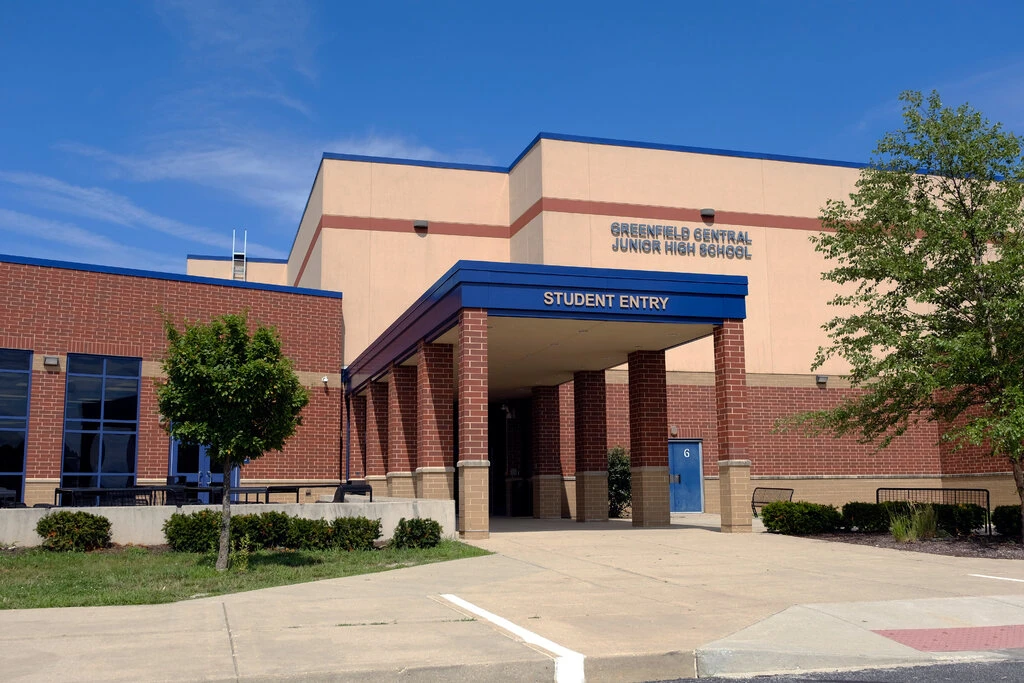
Senior high school
The final stage of secondary education is high school. Children from 14 years old go there. In America, there are mixed junior/senior high schools, where students spend six years until graduation. And there are also separate ones that are located in different buildings. High school lasts from grade 9 till 12. And this is the only opportunity for foreigners to attend a public school as an exchange student (only for one year). For the rest of the time, only private institutions are available to them. But even in public schools, foreign students must pay from 3,000 USD to 10,000 USD per year of study. Read more about admission to US schools in the article on secondary education.
All studies in high school are focused on entering a university: the students improve their GPA and prepare for the SAT/ACT. Compulsory subjects in high school:
- Mathematics;
- English;
- History;
- Natural sciences;
- P.E. physical education ;
- Arts.
In addition to the basic subjects, students can optionally take up Honors or Advanced Placements (AP). The former are students' groups that study subjects on a more in-depth level, while the latter are university-level courses. There are a total of 33 disciplines in six scientific fields. There is even Japanese, Macroeconomics, and Mechanics[5] available. Upon completing a course, students take an oral or written exam. Excellent grades in AP subjects increase your chances of admission to a prestigious university.
Most likely in the near future, the importance of AP courses will grow significantly. In 2021, the College Board canceled the SAT Subject Test permanently. It used to help graduates demonstrate their knowledge in specific subjects, such as Physics or Chemistry. They were obligatory for admission to some specialties. Advanced Placements could be a great alternative to the SAT Subject Test.
High schools do not have final exams. Instead, students take standardized tests: SAT (Scholastic Aptitude Test) or ACT (American College Testing). They are required for admission to American universities. In 2021, many US universities, including the Ivy League, made SAT / ACT optional due to the COVID-19 pandemic. Perhaps this change will remain in the future. Standardized tests have been criticized in the United States for a long time[6].
Secondary education in the USA
Higher education
Higher education in the United States is considered one of the most prestigious. Five American universities are ranked in the top-10 in the world according to the QS ranking[7]. Every year, thousands of foreigners choose America to study at the university. In 2019-2020, there were more than a million of them[8].
Vocational education
School graduates can get a quick vocational education in community colleges. Studying in one of them lasts two years. The workload is slightly lower than at universities, and a heavy emphasis is put on practical skills. In colleges, the student receives an associate degree and gets a job in the specialty.
Another option after community college is to transfer immediately to the third year of a university. To do this, you must have a GPA of 3.5 out of 4, while all grades in specialty subjects must be excellent. Foreigners are sometimes required to provide TOEFL and SAT certificates.
Trying to transfer to Harvard or Yale from a community college will not work it is theoretically possible, but in reality, prestigious universities accept only a small amount of the absolute best candidates worldwide , but other mid-level universities will be available. Many community colleges sign guaranteed enrollment agreements with universities. For example, after Bergen community college, you can transfer to New York University. For information about agreements between universities and exact programs available for study transfer, look up the College Transfer website.
Studying at a university
There are three levels in the US higher education system:
- Bachelor's degree — 4 years;
- Master's degree — 2 years;
- PhD — 4-6 years.
The process of studying at US universities is flexible. Students make their own schedules, and the main focus is typically on seminars and discussions. Upon admission, applicants choose the main specialty, or 'major,' and then can add a minor. The latter can be a useful supplement to the main profession. For example, a major is in Engineering, and a minor is in Robotics. Alternatively, it may reflect the student's personal interests: major — Biology, minor — French literature. Both options are natural for American universities.
Education in Master's and doctoral programs takes place in either graduate or professional schools. The graduate ones combine several areas of study usually in humanities , and professional schools are more specialized. They provide knowledge in a specific area: nursing, law, business, etc. The learning process includes not only research and theory but also regular practice and work related to the topic of the dissertation. Most often, doctoral graduates are awarded a PhD degree. For professional programs, there are DBA Doctor of Business Administration , JD Juris Doctor , MD Doctor of Medicine , etc.
Studying in the States costs 20,000-50,000 USD/year. Plus living expenses of about 10,000 USD/year. Fortunately, many US universities award scholarships and grants to students. Some of them, like the Ivy League, cover up to 100% of the tuition fees.
To enter an American university, a foreign applicant must have a high GPA score and a TOEFL or IELTS certificate, pass SAT/ACT, write a letter of motivation and receive recommendations. The application process for each level of study and detailed requirements are outlined in our article on admission to the United States. There you will also find information about admission to community colleges and the Pathway program .
Higher education in the USA
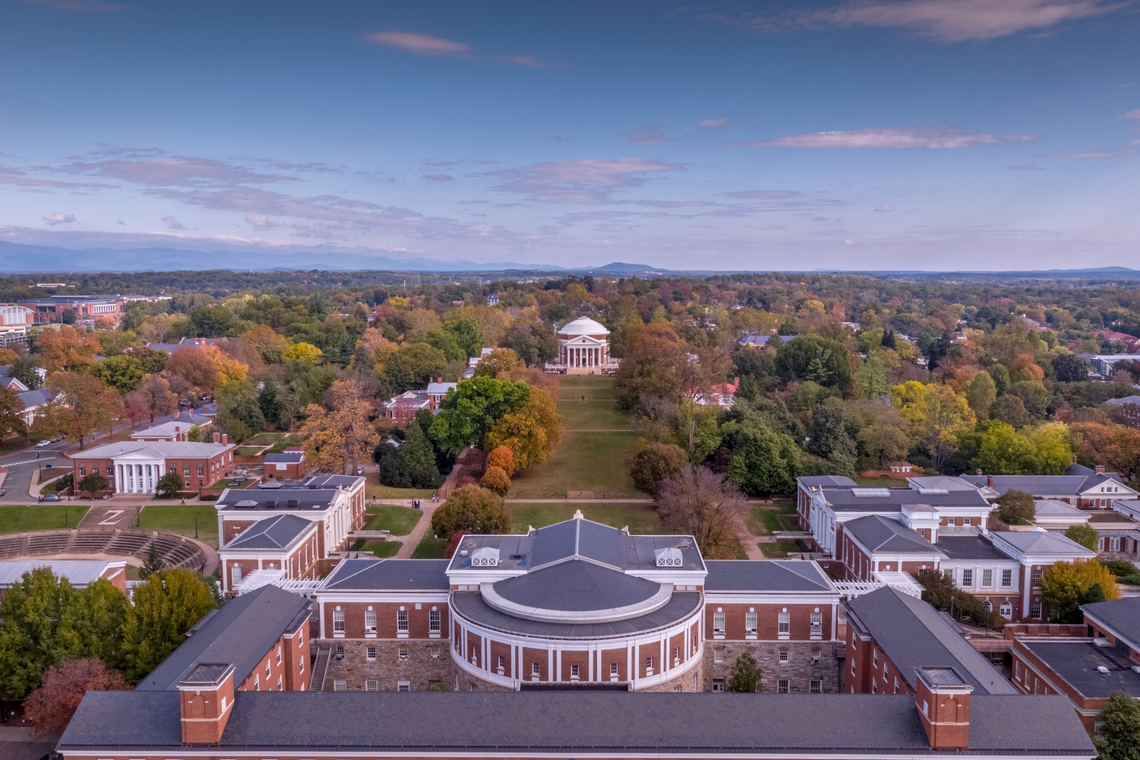
Last updated:
What Classes Do You Take in Middle School
Source: https://www.unipage.net/en/education_system_usa
0 Response to "What Classes Do You Take in Middle School"
Post a Comment